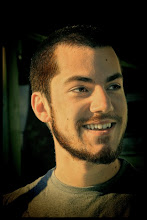Gartered Trogon, Cobá Ruins
As the title suggests, I
am lucky enough this winter to be spending the duration of my time off from
school, 5 weeks, in Mexico! I've been here since Dec 16th, staying with my
parents in the town of Puerto Morelos, near Cancún on the Yucatán Peninsula. The
place we’re staying is nice, a block off the beach with a view over the ocean
from the living room of our third floor rental. For the first two weeks I’m
based out of here, and then the real fun starts. A few of my friends are coming
down as well, and we’re embarking on a 2,400 mile roadtrip from here near
Cancún down to the state of Chiapas, across to Oaxaca state, and then back up
in a giant loop to where we started. During this we should see over 500 species
of birds, including many species that are endemic to Mexico or northern Central
America.
Before they got/get here,
my parents and I visited some of the local areas – snorkeling off of the beach
by our condo, visiting the Mayan ruins of Cobá on the day of “the end of the
world”. Somewhat predictably, at 11:11 the world didn’t end, nor at 12:21:12,
or at any other time throughout the day. Perhaps next time.
Our first arrival from the
states who was part of our initial group was my friend Luke Seitz, who arrived
on Christmas day after a long and arduous journey from Portland, ME to Cancun –
22 hours total travel time, and topped off by quite a fiasco of a pickup here
at the airport. Once we saw online that his plane had landed, my dad and I
headed to the airport to meet him, but of course it wouldn’t be that easy. For
some reason, the way that the airport is organized is that the only people that
can access the place where arrivals come out are taxis and resort shuttles – no
private cars or even pedestrians. In addition, the entire airport is made of
one-way roads that all take you back to the very start, so you have to do
massive loops each time you miss something. It ended up taking over an hour to
successfully get Luke, and required getting airport personnel to cross the
fence, go through the gate, fetch Luke, and bring him back to where normal
people were allowed to be. Definitely the most difficult airport meeting I’ve
ever been a part of!
Luke
and I have five days here, through the 30th, until the two remaining
members arrive from the States: Jess Johnson and Keenan Yakola, friends of mine
from Massachusetts. Between now and then Luke and I are going to be getting
SCUBA certified, which we started on the other day, and also going out to
nearby Cozumel Island, where there are 3 species of bird that occur nowhere
else. The underwater scene here is mesmerizing, with huge Spotted Eagle Rays
seen while snorkeling right off the beach, thousands of fish including small
colorful species and good numbers of big Barracuda – and even some Green Sea
Turtles on our first dive yesterday.
It
has been a great trip so far, and I look forward to seeing what the rest of it
will bring!
Geoffrey's (Yucatán) Spider Monkey, Puerto Morelos

















































